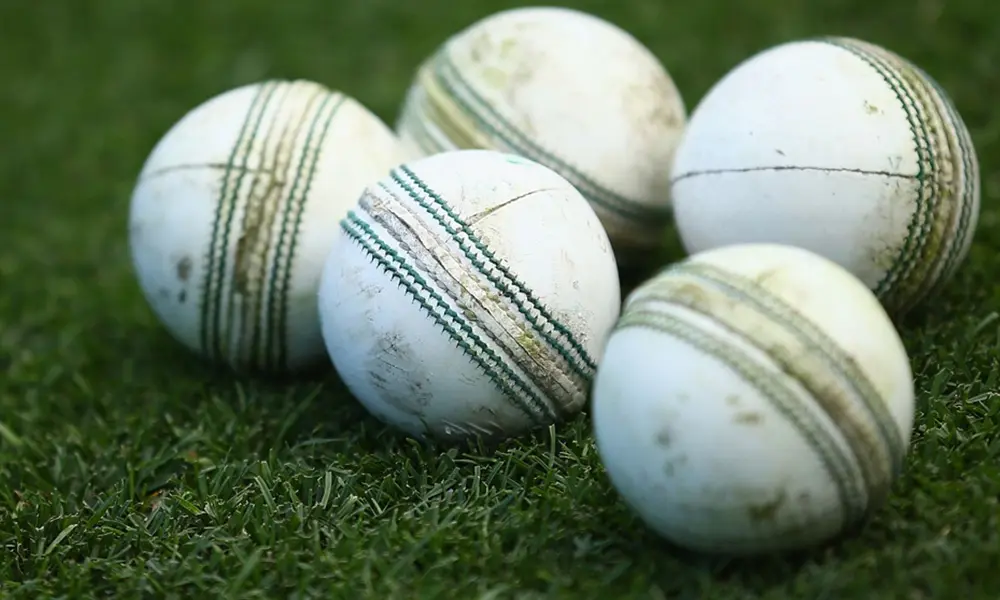Unraveling the Mystery of Cricket Ball Evolution

In the intricate world of cricket, where the clash between bat and ball defines the essence of the game, the evolution of the cricket ball has been a journey marked by innovation, tradition, and meticulous craftsmanship. From its humble origins to the technologically advanced spheres used in modern cricket, the cricket ball's evolution is a fascinating tale that showcases the sport's adaptation to changing times and conditions. In this blog, we delve into the history, composition, and impact of the cricket ball on the game we love.
Origins and Early Development
The cricket ball, as we know it today, traces its origins to England in the 18th century. Early cricket balls were handcrafted from natural materials such as cork, wrapped in twine, and covered with leather. These balls were significantly larger and heavier than modern ones, with a seam that was less pronounced but still played a crucial role in aiding bowlers with swing and seam movement.
Evolution in Materials and Construction
Over time, advancements in technology and materials transformed the construction and performance of cricket balls:
- Core Materials: Traditional cricket balls initially used cork as the core, surrounded by tightly wound twine. Modern balls often feature a cork nucleus surrounded by layers of yarn and wound string.
- Leather Covering: The outer layer of a cricket ball is typically made from high-quality leather, traditionally dyed red for Test cricket and white for limited-overs formats. The leather covering is carefully stitched together to maintain the ball's shape and durability.
- Seam Development: The seam of the cricket ball has evolved to play a critical role in generating movement off the pitch. Bowlers manipulate the seam to achieve swing (movement in the air) or seam (movement off the pitch), adding layers of complexity to the game's strategic depth.
Variations Across Formats and Conditions
Different cricket formats and playing conditions necessitate variations in ball design:
- Red vs. White Balls: Red balls are predominantly used in Test cricket, offering durability and pronounced seam movement. White balls are used in limited-overs formats (ODIs and T20s) to enhance visibility under floodlights and encourage aggressive batting.
- Duke vs. Kookaburra vs. SG: Different manufacturers produce cricket balls tailored to specific conditions. The Duke ball, used in England, is known for its pronounced seam movement. The Kookaburra ball, used in Australia and many other countries, offers consistency and bounce. The SG ball, used in India, is renowned for its durability on abrasive pitches.
Impact on Gameplay and Strategy
The evolution of the cricket ball has had a profound impact on the dynamics of the game:
- Bowling Tactics: Bowlers employ various techniques to exploit the characteristics of the ball, including swing, seam, reverse swing, and spin. The condition of the ball (new, old, or deteriorated) also influences bowling strategies.
- Batting Challenges: Batsmen must adapt to different ball behaviors, adjusting their technique and shot selection accordingly. A new ball swings more, while an old ball may spin or seam unpredictably.
Innovations and Future Directions
Looking ahead, innovations in cricket ball technology continue to push the boundaries of performance and sustainability:
- Durable Coatings: Protective coatings and treatments enhance the longevity of cricket balls, reducing wear and tear during extended matches.
- Technological Integration: Advances in ball-tracking technology (such as Hawk-Eye) provide insights into ball trajectory, bounce, and spin, aiding umpiring decisions and enhancing viewer experience.
Conclusion
The cricket ball stands as a testament to the sport's evolution, blending tradition with innovation to meet the demands of modern cricket. From its origins as a handmade sphere of cork and leather to today's meticulously crafted orbs designed for optimal performance, the cricket ball continues to play a pivotal role in shaping the game's narrative. As cricket evolves and embraces new challenges, the cricket ball remains an enduring symbol of skill, strategy, and the timeless contest between bat and ball on the hallowed grounds of cricketing arenas worldwide.

